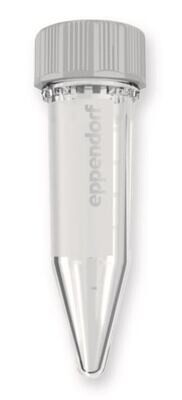Verzending 24–48 u • Levering in de hele EU • Veilige chemieverpakking
DC-Fertigfolie ALUGRAM® RP-2 / UV254, 4 x 8 cm, Glasplatte, 0,15 mm, 50 Stück
Art.-Nr. 3590.1
€ 120,80
lieferbar
1
Auf den Merkzettel
DC-Fertigfolie ALUGRAM® RP-2 / UV254, 4 x 8 cm, Glasplatte, 0,15 mm, 50 Stück
Produktbeschreibung
HS-Code: 38229000
Material: Aluminium
EAN: 8721028177810
Marke: Macherey-Nagel
Materiaal: aluminium met dimethyl modiefied silicagel 60, met fluorescentie-indicator.
Silanized silica 60 with dimethylmodification
Carbon content 4 %
- Specific surface: ~500 m2/g
- Mean pore size: 60 Å
- Specific pore volume: 0,75 ml/g
- Particle size: 5-17 µm
- pH stability: 2-10
Order of polarity:
silica > DIOL > NH2 > CN > RP-2 > RP-18 W
Recommended application: active plant constituents, steroids
U vindt nog meer aantrekkelijke aanbiedingen om uw chromatografielaboratorium te vervolledigen op onze Chromatografie pagina!
DLC-plaatjes ALUGRAM® RP-2 / UV254 - dimethyl-modified
Technische informatie
| Plaatformaat | 4 x 8 cm |
| Laagdikte | 0.15 mm |
| Materiaal | aluminium |
| Wijziging | Silica gel with dimethyl (RP2, C2) modification |
| Fluorescentie-indicator | ja |
| Scheidingsprincipe | Reversed phase (RP) |
| Fase | RP-2 |
| Partikel grootte | 5-17 µm |
| Partikel soort | Fully porous particles (FPP) |
| Poriëngr. | 60 Å |
| Poriënvolume | 0.75 ml/g |
| pH-stabiliteit | 2,0-10,0 |
| Temperatuurstabiliteit | High |
| Aanbevolen toepassing(en) | Active plant constituents, Reversed phase (RP) and Normal phase (NP), Steroids |
U vindt nog meer aantrekkelijke aanbiedingen om uw chromatografielaboratorium te vervolledigen op onze Chromatografie pagina!
Thin Layer Chromatography (TLC)
Although the principle of thin-layer chromatography is more than a century old, it did not make its breakthrough as an analytical method until about 50 years ago.
Thanks to the development of new sorbents and supports, as well as increasing instrumentation and automation, TLC has become a versatile separation method. It is used both in qualitative analysis and in quantitative analysis.
Applications range from simple manual separation processes in classic TLC to automated processes in HPTLC (high performance thin layer chromatography).
Advantages of thin layer chromatography:
- Higher sample throughput in less time
- Suitable for screening tests
- Pilot process for HPLC
- The ready-to-use TLC layer functions as a data storage device for separation results
- The separated substances can be used later for further analysis (e.g. IR, MS)
- By switching the mobile and the stationary phases, the separation process can be optimised quickly and cost-efficient
Das könnte Ihnen auch gefallen

Methyl 2,4-difluorobenzoate, 98.0%, 1g
Methyl 2,4-difluorobenzoate, 98.0%, 1g
Art.-Nr. F008809-1G
€ 18,70

(3-phenyl-1H-pyrazol-1-yl)acetic acid, 95.0%, 5g
(3-phenyl-1H-pyrazol-1-yl)acetic acid, 95.0%, 5g
Art.-Nr. F366484-5G
€ 1 584,00

(4,6-Dichloropyridin-3yl)boronic acid, 95.0%, 5g
(4,6-Dichloropyridin-3yl)boronic acid, 95.0%, 5g
Art.-Nr. F239311-5G
€ 358,60

5-Bromo-1H-indole-2-carbaldehyde, 95.0%, 100mg
5-Bromo-1H-indole-2-carbaldehyde, 95.0%, 100mg
Art.-Nr. F211190-100MG
€ 23,10

(R)-3-tert-Butoxycarbonylamino-butyric acid, 95.0%, 250g
(R)-3-tert-Butoxycarbonylamino-butyric acid, 95.0%, 250g
Art.-Nr. F027558-250G
€ 85,80
Endbenutzererklärung

Natriumtetraphenylborat 99 % 25 g
Natriumtetraphenylborat 99 % 25 g
Nur für registrierte Unternehmen
Art.-Nr. 007114-2
€ 126,22
Preise anzeigen in:EUR


![7-Chloro-2,3,4,5-tetrahydro-1H-benzo[e][1,4]diazepine, 97.0%, 1g 7-Chloro-2,3,4,5-tetrahydro-1H-benzo[e][1,4]diazepine, 97.0%, 1g](https://d2j6dbq0eux0bg.cloudfront.net/images/88473019/4782668396.png)
![(S)-HEXAHYDROPYRAZINO[2,1-C][1,4]OXAZIN-4(3H)-ONE HCL, 95.0%, 5g (S)-HEXAHYDROPYRAZINO[2,1-C][1,4]OXAZIN-4(3H)-ONE HCL, 95.0%, 5g](https://d2j6dbq0eux0bg.cloudfront.net/images/88473019/4856314718.png)



